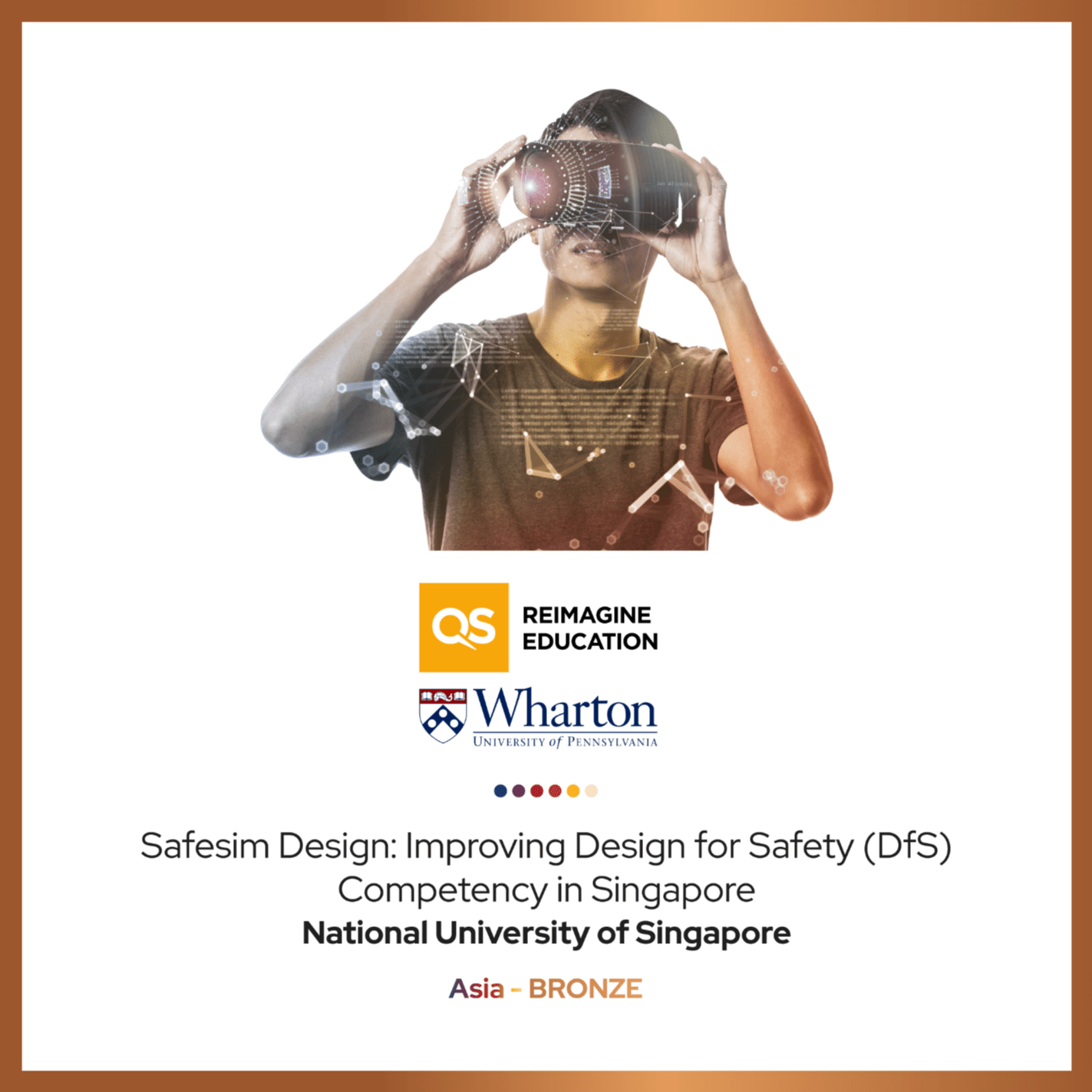SafeSim Design
SafeSim Design (SSD) is a digital game-based tool developed for designers (e.g., architects and engineers). This immersive, single‑player experience is designed to reinforce the principles of Design for Safety (DfS), enabling users to identify design-related hazards and apply effective controls within a realistic virtual setting.
This study is funded by SkillsFuture Singapore under Workforce Development Applied Research Fund (WDARF) Grant [GA19-05]. The contributions of the IES DfS workgroup and other anonymous practitioners are greatly appreciated.
Our learning outcomes
By the end of the digital game-based learning (DGBL), learners can:
Our approach
Overview of SSD
Four stages of varying difficulty
Different design limitations to address different learning outcomes
Two phases at each stage
Identification & Mitigation
We adopt a 3D simulation game-based learning approach, and combine with authentic learning framework, that immerses learners in realistic scenarios, enabling them to apply technical knowledge, exercise critical thinking, and make decisions in safe, risk-free environments. We developed this flowchart to help learners differentiate design risks and operational hazards.
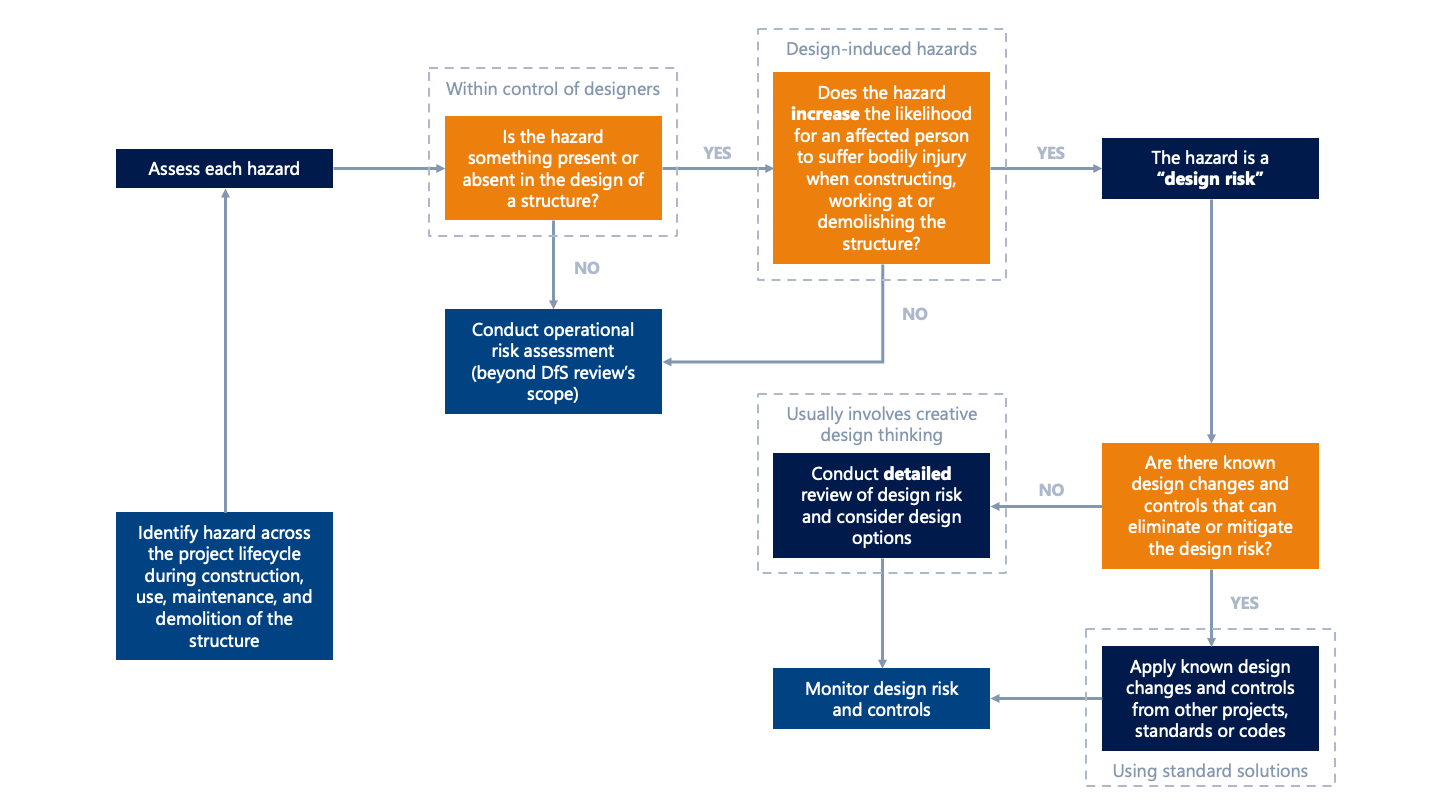
Key feature #1
Mr Chief Designer (Mr CD)
Introduction to Mr CD as the role of a “teacher”
- Players to follow the instruction carefully
- Provided the players with “model” answer to allow them to compare answers
Setting the context
- Role of players in the game
- Provide the objective which is to consider the situation from DfS point of view
- Teach how to use the controls
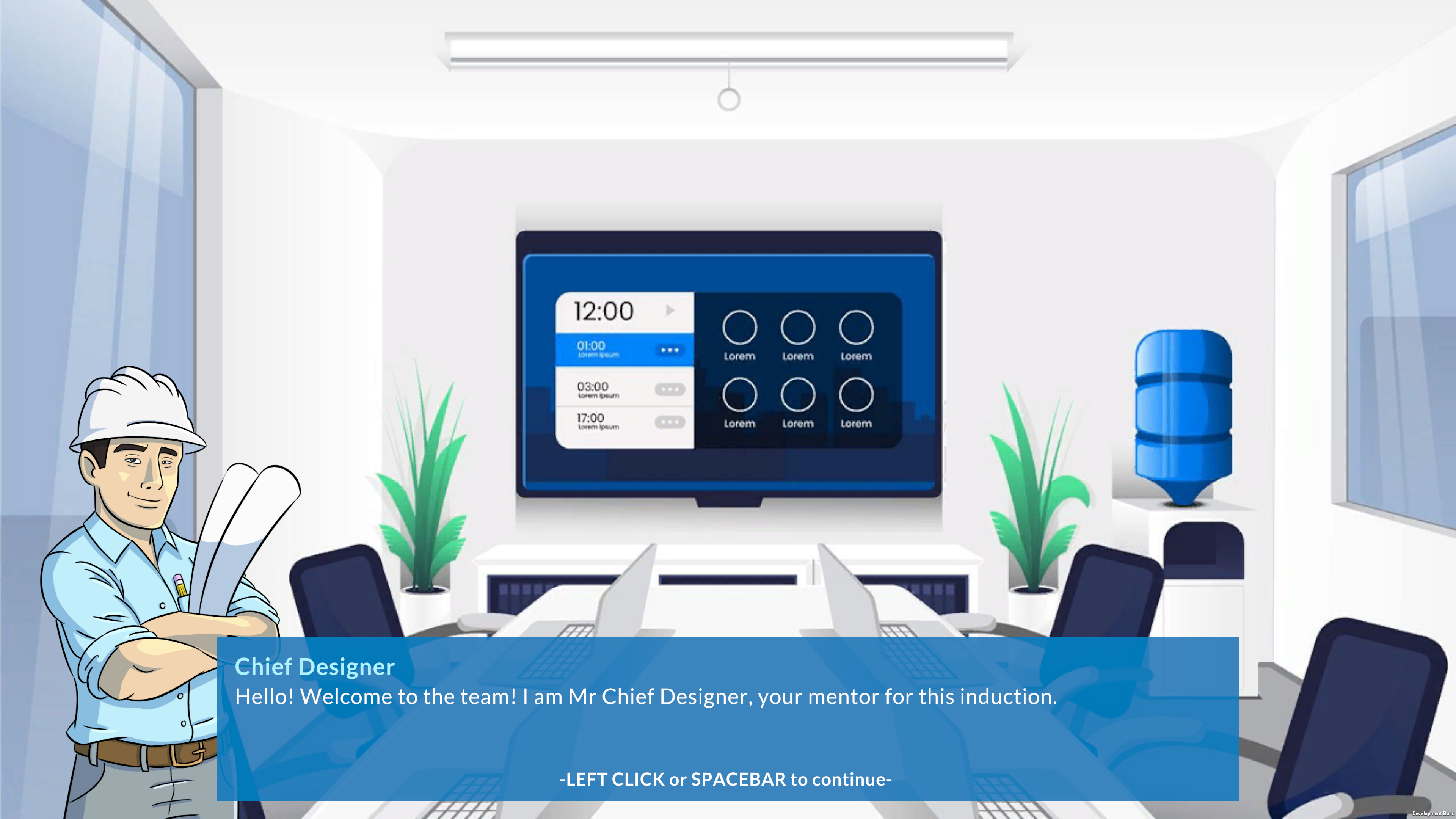
Key feature #2
Phase 1
Identifying design risk
Capturing design risks (DR)
- Introduction of operating hazards (OH) as red herrings
- Allows players to assess the captured risk
- Train players to differentiate DR and OH
Answering MCQ related to DR
- Provide immediate feedback
- Provide hints and explanation to reinforce DfS concepts
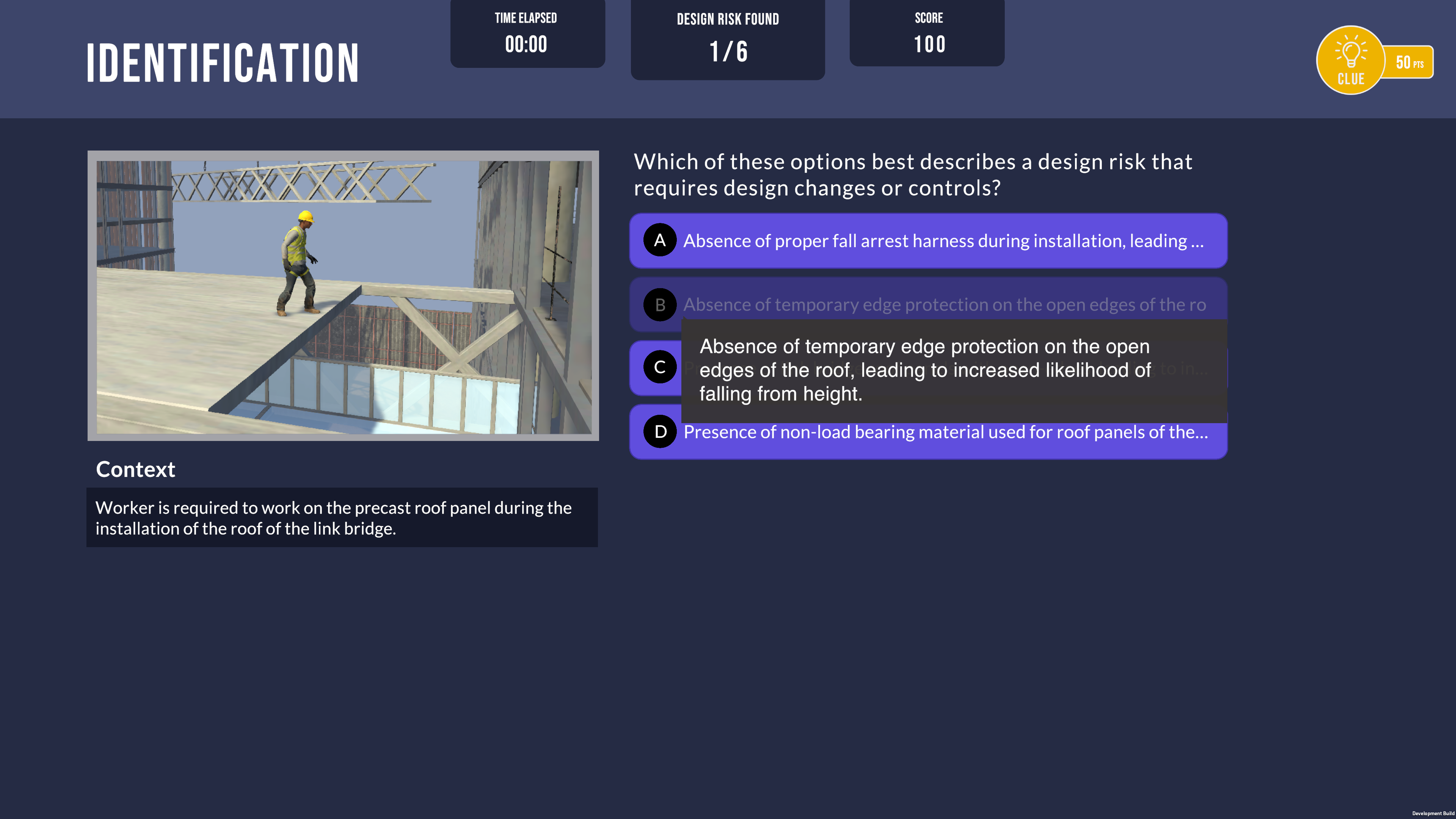
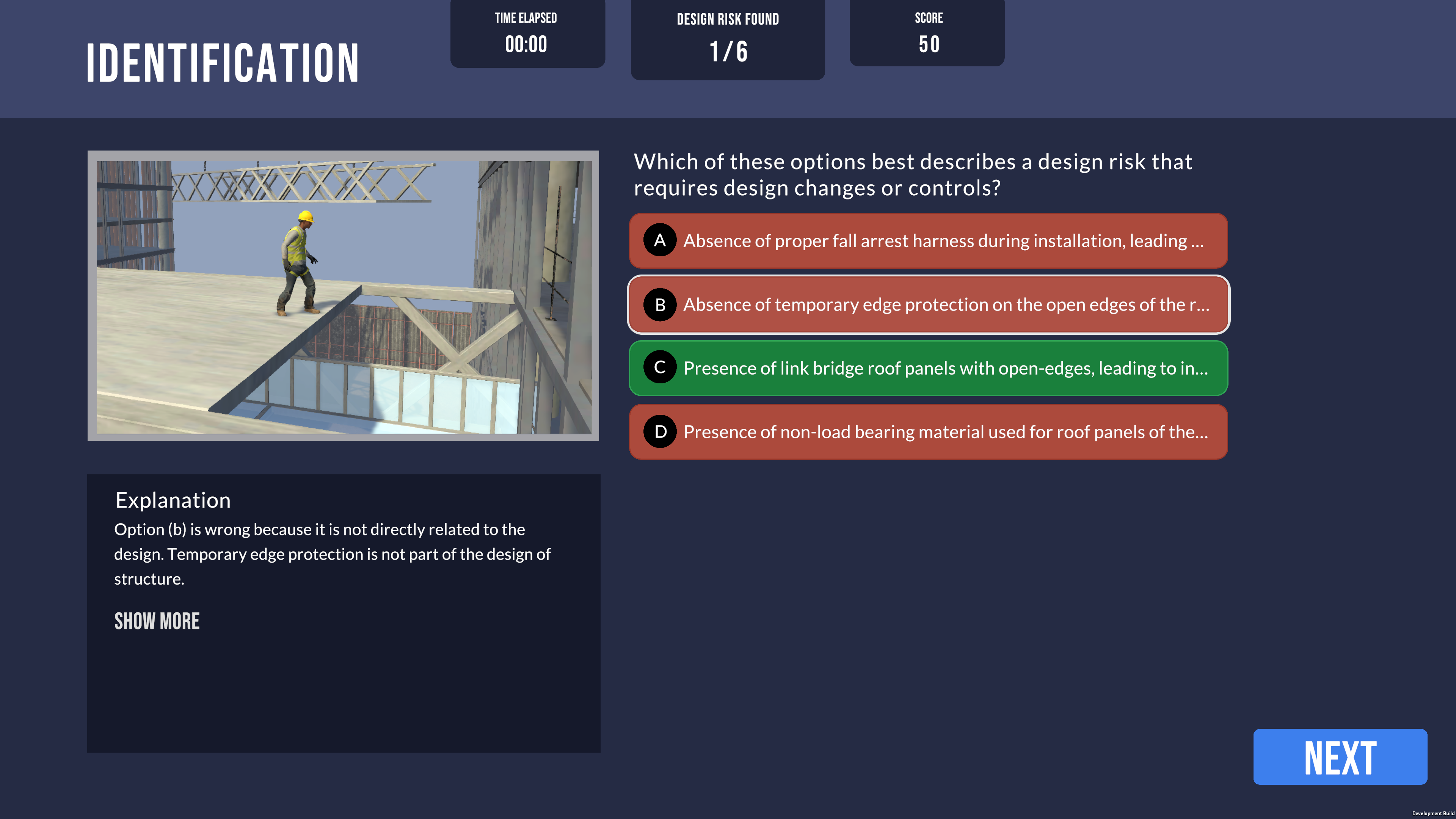
Key feature #3
Phase 1
Severity and likelihood ratings
Rate DR based on the severity and likelihood
- Using the 5-by-5 risk matrix
- Based on the Risk Management Code of Practice
Recommended ratings
- Can see their ratings against the recommended ratings
- “Model” ratings and explanations given
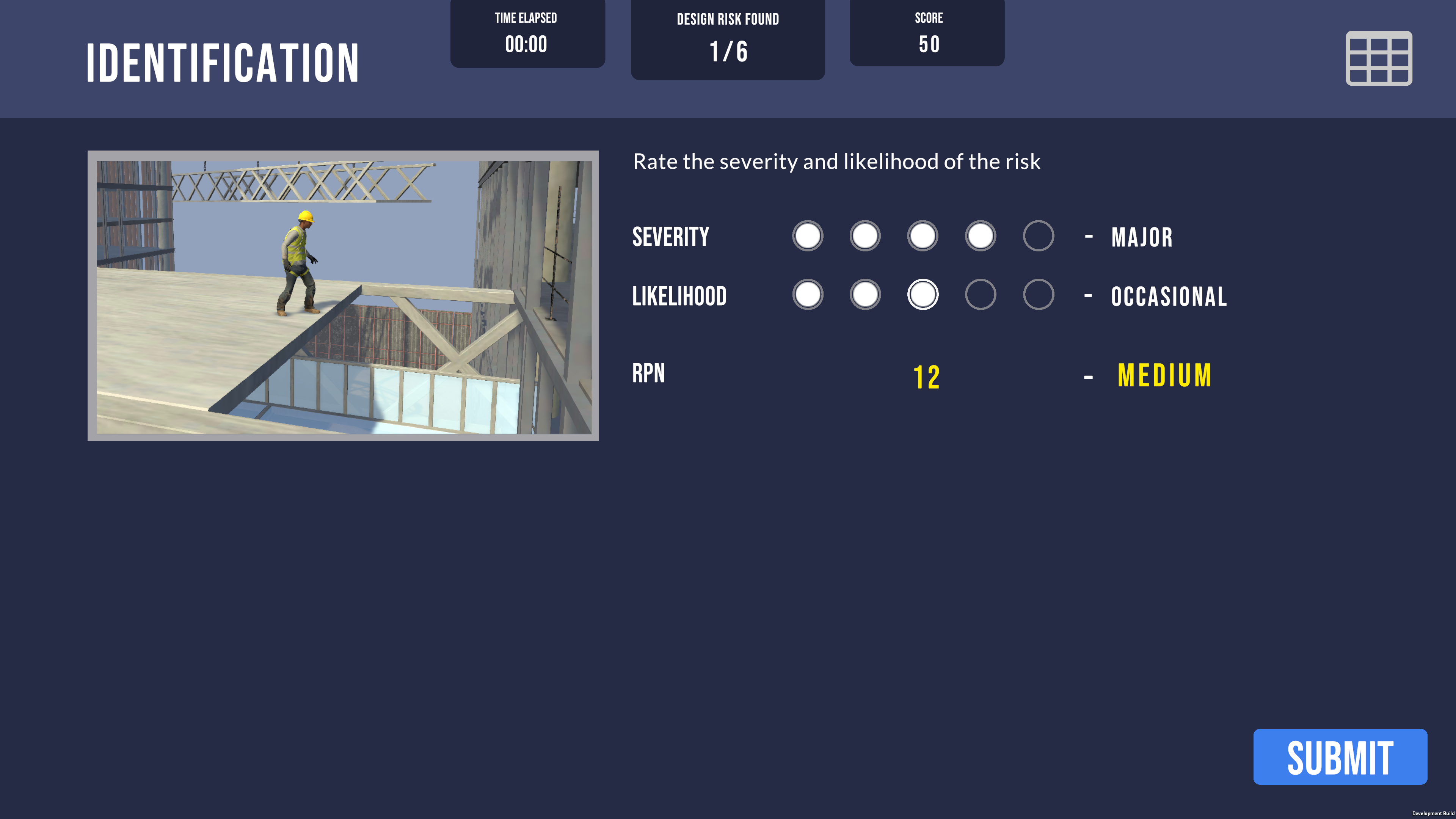
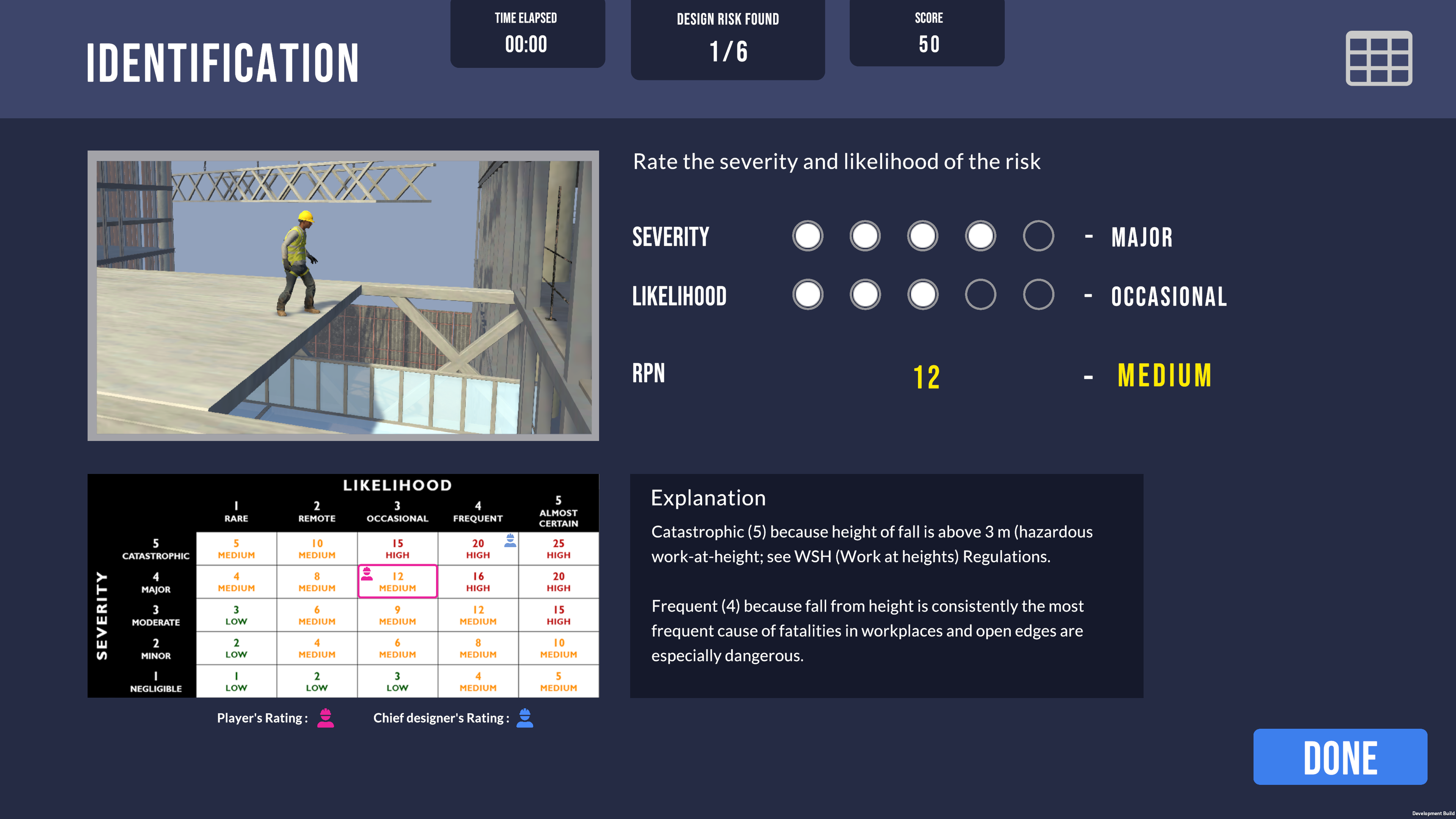
Key feature #4
Phase 2
Providing mitigation measures
Choosing the most suitable measure
- Ticks indicate suitability for the scenario (based on hierarchy of control)
- Some options are NOT design-related controls or changes
- Immediate response with explanation
Ability to suggest alternative solutions
- Enable creativity for players to develop feasible design controls or solution
- Sharing of ideas and expertise
Unlocking bonus rounds
- Allowing additional “free play” for players to explore other forms of mitigation control
- Increase motivation for players and acts an incentives for them to get the correct option

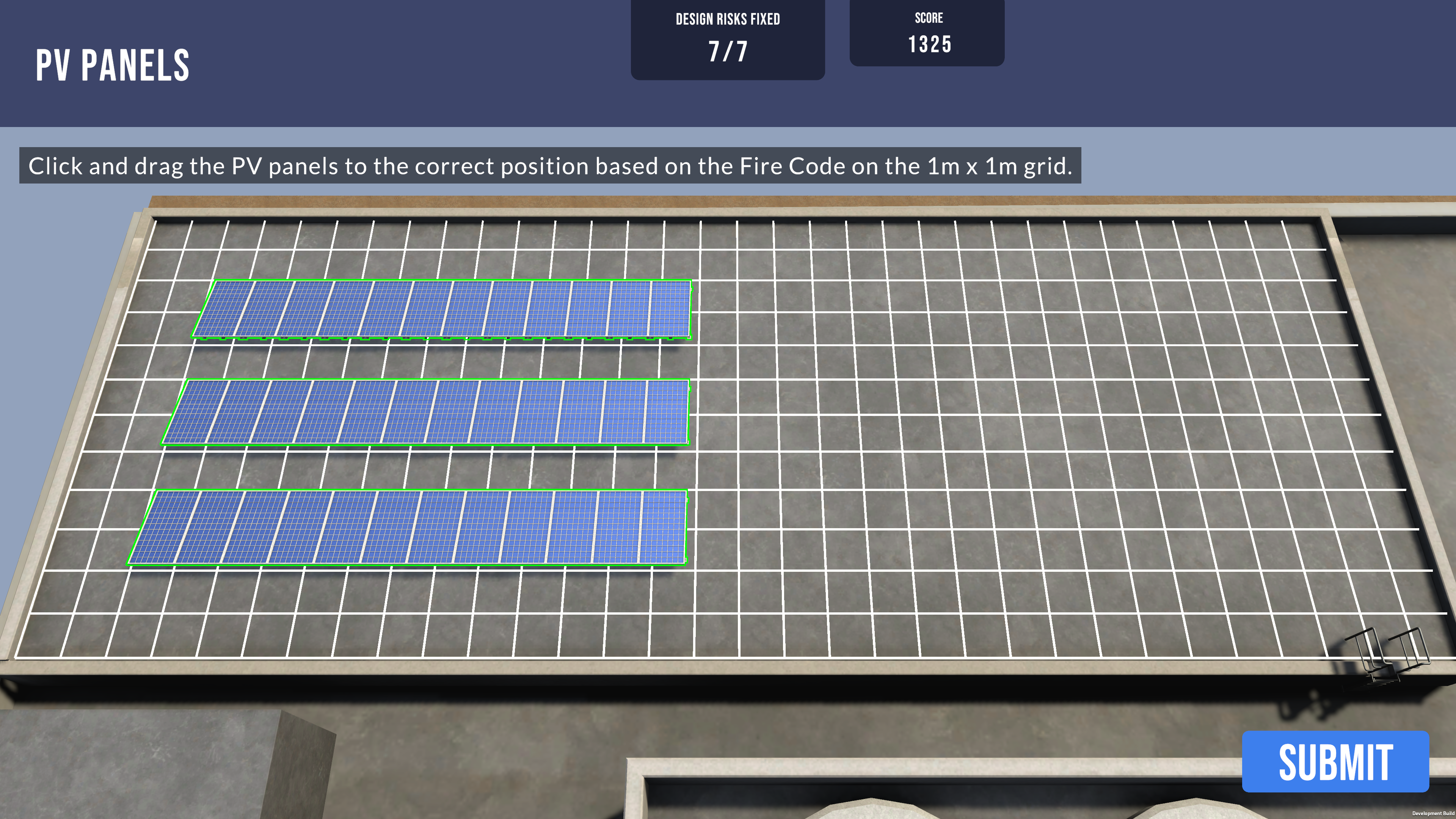
Dataset and Toolkit
Deliver high-impact learning through game-based experiences.
DGBL Toolkit for Professional Upskilling
Are you looking to integrate digital game-based learning (DGBL) into your training or professional development programmes? The DGBL Toolkit offers a comprehensive, research-backed framework to help course developers, educators, and industry professionals design effective, engaging, and purposeful game-based learning.
What's inside?
This free toolkit provides step-by-step guidance on:
- Profiling your learners to tailor gameplay and content
- Designing course objectives and assessments aligned with professional learning outcomes
- Building authentic and motivating game experiences using proven gamification elements
- Collaborating effectively across multidisciplinary teams for seamless development
Why use this Toolkit?
- Grounded in real-world case studies from the construction industry
- Features practical templates, guiding questions, and a full walkthrough of a live DGBL course
- Enables you to create immersive training that improves knowledge retention, skills application, and learner motivation
Certificates and Awards
Annual Digital Education Award (ADEA)
Centre for Teaching, Learning and Technology (CTLT) 2024
The ADEA was established to encourage the innovative use of digital technologies in teaching and to formally recognise colleagues at the National University of Singapore (NUS) who demonstrated excellence in enhancing student learning through digital means. The award highlighted impactful projects that exemplified thoughtful and effective digital integration in pedagogy, contributing meaningfully to student engagement and learning outcomes.
Bronze award - Asia
Reimagine Education Awards 2022
This award recognises the project for having achieved a world-class standard in educational innovation, with outstanding levels of scalability, innovation, and efficacy. It was selected as one of the leading entries from 1200 entries by a panel of 400 international higher education expert judges.
